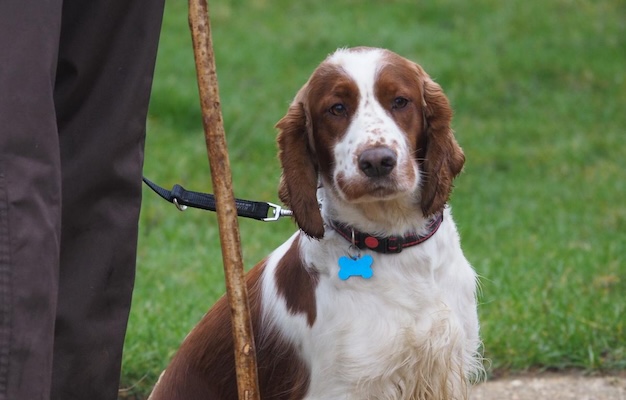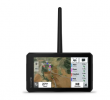If your dog is in a public place it must wear a collar. That's the law, writes David Tomlinson, although there are a few exceptions.
Do working dogs have to wear a collar?
Yes, it is a legal requirement for dogs in public places to wear a collar, with details of their owner. In that case, you’d best be aware of the smartest gundog collars around.
Like all good laws, there are exceptions. Emergency rescue dogs and registered guide dogs are exempt, as are dogs being used by a member of HM Armed Forces, the police or HM Customs and Excise. Sheep and cattle dogs are allowed to work without a collar, and so are hounds and gundogs. However, do note that gundogs can only go collarless when they are actually working; if you take your dog for a stroll across the common, or even into the pub, it should be collared.
There’s a good reason why working dogs are exempt from wearing a collar and that is, of course, the risk of them getting caught or hung up while working in thick cover or even navigating their way over or through a fence. I have seen many working gundogs wearing collars over the years but never yet seen a dog get trapped by one, although it clearly can happen.
What about microchipped dogs?
Nowadays all dogs have to be microchipped by law. There is a common misconception that a microchipped dog doesn’t need a collar. Microchipping is a great advance but it isn’t 100% reliable. A lost dog wearing a collar and tag is easy to return to its owner.
Like most gundog owners, I’ve always used rope-slip leads, so there was no need for a collar to clip the lead to. What made me change my unlawful ways was a wayward spaniel that on a couple of occasions ran off while on a walk (she was pursued and eventually retrieved) and another spaniel that became deaf, so was prone to heading off in the wrong direction. (Read can landowners request walkers put dogs on a lead?)
So if your dog is going to have to wear a collar when it’s on show in public, make sure it’s something to be proud of.
Extremely smart gundog collars
Purdey bridle leather dog collar in brown

A few years I invested in a pair of top-quality, bridle-leather collars for my spaniels. Bridle leather may cost more but it repays in the long run. These collars have been remarkably durable and are just as good today as when I bought them, though they have been cleaned regularly with saddle soap, the secret to such longevity. The dogs now wear them all the time unless they are working.
The Field says: The dog collar above is made from English bridle leather for strength and durability and has brass fittings. It is embossed with the Purdey logo and has an engravable brass plate to add the name of your dog. It is handmade in England and available in small, medium and large.
BUY NOW
You might also like to consider
Le Chameau leather dog collar

If you’re a fan of Le Chameau gumboots then you might like to reward your faithful peg companion with this leather dog collar. It has an embossed Le Chameau logo and a branded removable brass logo tag. Available in small, medium and large. (Read The Field’s guide to the best gumboots around.)
BUY NOW
House of Bruar Argentinean Dog Collar

Shown in red above, an eye-catching working dog collar created from high-quality bridle-leather using traditional South American techniques. In sizes from XS to XL and a variety of colour choices.
BUY NOW
A word on gun dog tags
Conventional round engraved tags that attach to the collar with a metal ring may be cheap and cheerful, but they have a remarkable ability to wear through and get lost, so you can all too easily end up with a collared dog without identity. The best solution I’ve come across is the Indigo Collar Tag. These are indestructible engraved metal tags that slide onto the collar. They don’t rattle, can’t fall off, don’t rust and the engraving doesn’t fade. Like the collars, mine have lasted 12 years and still look as good as new. Indigo Collar Tags are guaranteed for the life of the dog, but they should last much longer: mine are now on the next generation of dogs.
Tracker collars
A relatively new development in the canine world is the tracker collar, using a GPS system so you can see from a map on your smartphone or computer exactly where your dog is. If you’ve got a well-trained dog with good recall this is something you don’t need, but if you have a dog that likes to hunt in the next county it’s a useful piece of kit. It also has practical uses in the sporting field. Many falconers use tracker collars on their dogs so they can locate the dog quickly when it is on point. It’s also invaluable with dogs used to find wounded or shot deer.
The only drawback to the system is areas with poor mobile coverage. I once encountered a couple who had lost their tracked (rescue) dog, but as there was no mobile signal they were frustratingly unable to locate it. Modern technology is wonderful, but not infallible.
All products are independently selected by our editors. If you buy something, we may earn an affiliate commission. Learn more.
This article was originally published in 2019 and has been updated.







